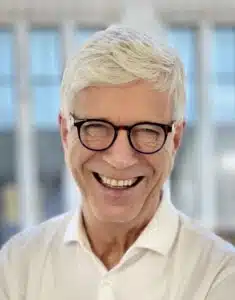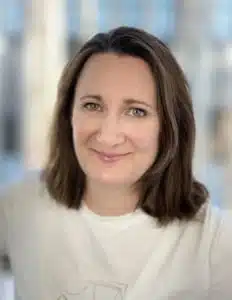Axomera therapy in orthopedics, sports medicine and pain therapy

Did you know that injured limbs and organs in the axolotl grow back completely - including the heart and brain? During regeneration, his tissue generates small bioelectric fields. This phenomenon is a basis of Axomera therapy.
The Axolotl Principle
“Bioelectric fields are the fundamental signals for inflammation and regeneration. As with the axolotl, we use it to inhibit inflammation and direct cells to where they are needed to heal”
Prof. Dr. med. Albrecht Molsberger
Bioelectric fields control wound healing. Cells migrate in bioelectric fields. For example
Fibroblasts, epithelial cells, mesenchymal stem cells, neurons and immunocompetent cells.
Axomera - like acupuncture, but faster
Without drugs
Alternative to Op's
Healing possible
“Even in patients with the most severe pain conditions, we see improvement from Axomera that we didn’t think was possible before”
Treat with Axomera
Orthopedics
Sciatica
Trochanter pain
Morton neuralgia
Orthopedics
Sciatica
Trochanter pain
Morton neuralgia
Sports Medicine
Inflammation of the Achilles tendon and patellar tendon
Adductor irritation
Torn ligaments
Sports Medicine
Inflammation of the Achilles tendon and patellar tendon
Adductor irritation
Torn ligaments
Pain therapy
Clusterkofschmerzs
Trigeminal neuralgia
CRPS type 1 (Sudeck's disease)
Pain therapy
Clusterkofschmerzs
Trigeminal neuralgia
CRPS type 1 (Sudeck's disease)
Allergy
Dust mites
Nasal complaints
Red eyes
Allergy
Red eyes at:
Hay fever
Dust mites
Answers to common questions
- For the patient, the treatment resembles acupuncture
- The needles are stimulated with an electric field specific to each patient.
- The stimulation is painless and lasts 30 minutes.
- As a rule, only two to six treatments are performed at first.
- We expect an initial response to Axomera therapy in pain disorders after the second treatment.
- In individual cases, more treatments may be required.
- Axomera treatment can be repeated at any time if necessary. No habituation occurs.
- Usually, treatments can be completed within two to four weeks.
- Analogous to surgical measures, we also expect further postoperative and healing within approx. 6 – 12 weeks with Axomera therapy.
- Observe and describe your pain as accurately as possible.
- Where exactly is the pain localized. Mark these places.
- What is the character of pain? Rather punctate, burning, radiating or dull, diffuse, contracting.
- Observe and document any changes in your symptoms as closely as possible between treatments.
- Reduce your standard medications only in consultation with your doctor.
- Even if the pain decreases unexpectedly quickly, increase the (sports) load only in consultation with your doctor.
- The most common side effect is temporary fatigue after Axomera therapy in the head area – e.g., migraine and cluster headaches
- In rare cases, temporary overstimulation of discomfort may occur for a few days
- With over 12,000 treatments / year, axomere therapy is particularly well proven.
- The side effect profile corresponds to that of acupuncture, which is classified as an extremely safe therapy.
Axomera Team

Prof. Dr. med. Albrecht
Molsberger
CEO CHP GmbH
Apl. Professor of Orthopedics at the Ruhr University Bochum, Axomera Center for Orthopedics and Pain Therapy, Düsseldorf.

Gabriele Böwing, MD
CMO CHP Ltd.
Specialist for Internal Medicine and Reumatology

Philipp Schröder, MD
Co-Founder CHP GmbH
Physician, WBA Orthopedics and Trauma Surgery, Axomera Therapy

Sandra Hüwels
CRM Manager Quality Management

Isabell Klauer
Businesswoman in health care
CRM

